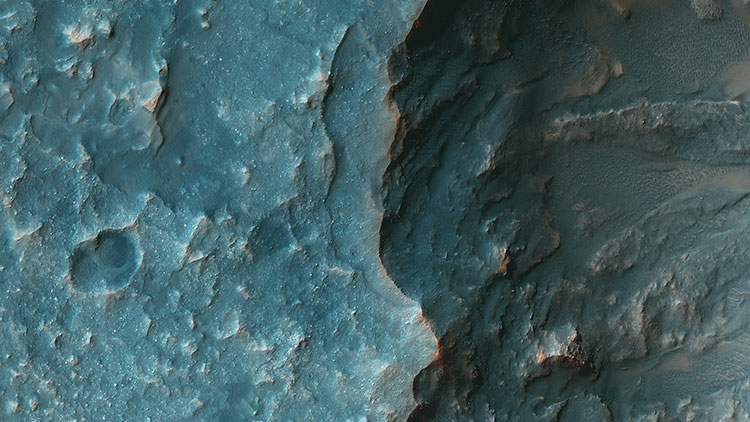#7 MARTIAN TERRAIN
Light-Toned Layering in Noctis Labyrinthus Pit.

The full image to the east shows shows good exposures of light-toned layering. Scientists want to learn how this layering occurred during the distant past: could it have been water or some other kind of geologic activity?
Just like on Earth, rock layers can tell the geologic history of a region: it's a window to the past. Further study of layering on Mars, and in this region, can help us determine what minerals might be in those layers, including clays and sulfates. By identifying those possible minerals, we start to have a better idea of what deposited them there.
Noctis Labyrinthus is located between the Tharsis upland and Valles Marineris, which is the largest canyon in the Solar System.
Written by: HiRISE Science Team
Just like on Earth, rock layers can tell the geologic history of a region: it's a window to the past. Further study of layering on Mars, and in this region, can help us determine what minerals might be in those layers, including clays and sulfates. By identifying those possible minerals, we start to have a better idea of what deposited them there.
Noctis Labyrinthus is located between the Tharsis upland and Valles Marineris, which is the largest canyon in the Solar System.
Written by: HiRISE Science Team





